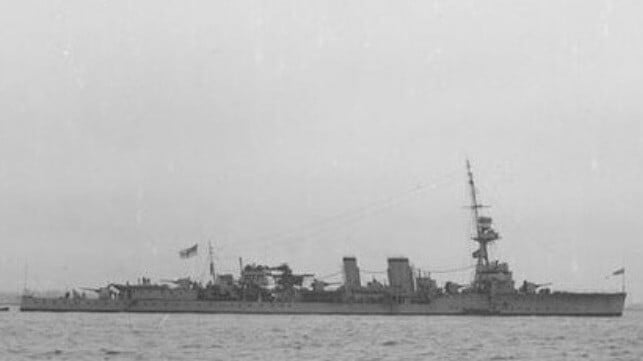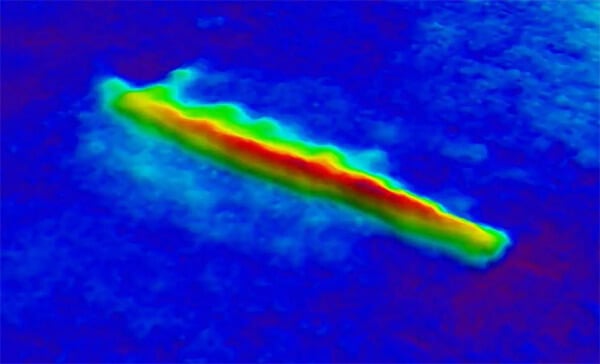WWI Shipwreck Survey to Help Tackle Threats of Environmental Time Bomb

A team of experts is planning to carry out a detailed survey of a British World War I warship sitting at the bottom of the sea, hoping that it can serve as a blueprint for tackling the environmental time bombs of wartime shipwrecks.
The team from Britain’s Ministry of Defense Salvage and Maritime Operations (SALMO) and Waves Group intends to study the wreck of HMS Cassandra which is lying in just 20 meters of water in the Baltic Sea, off the Estonian island of Saaremaa. The British warship was lost in December 1918 after hitting a mine.
The Cassandra survey is a response to a call by Project Tangaroa for governments to act decisively and deal with the threat of pollution posed by thousands of vessels lost during World War I and II. Project Tangaroa, a global community of experts coordinated by Lloyd’s Register Foundation, The Ocean Foundation, and Waves Group, made the call at the third UN Ocean Conference in Nice, France.
Wartime shipwrecks lying at the bottom of the oceans and seas are believed to be environmental disasters waiting to happen. It is estimated that globally, there are over 8,500 wrecks classified as “potentially polluting wrecks. The majority originate from World War I and II and contain harmful chemical pollutants, unexploded munitions, and an estimated 2.5 million to 20 million tonnes of oil.

Imaging of HMS Cassandra from 2021 (Royal Navy)
There are concerns that after 80 to 110 years beneath the waves, the wrecks are becoming increasingly unstable, something that is raising the risks of pollution. Climate change, structural breakdown, and a lack of proactive management are some of the factors that have made the wrecks become “ticking time bombs.”
Experts believe that without proactive actions, dealing with pollution from these wrecks could cost up to $340 billion. There is also the danger of immeasurable environmental damage, threats to marine life, and potentially disastrous impacts on ocean economies and coastal communities.
To avert the risks posed by wartime shipwrecks, the planned study of Cassandra is seen as critical in serving as a blueprint. Discovered in August 2010 by the Estonian Navy and Estonian Maritime Museum, the cruiser was a tragic aftermath of WWI.
Cassandra was commissioned into the Royal Navy fleet in June 1917 and actively participated in WWI for two years. Following the end of the war, the cruiser was part of a British force dispatched to the Baltic as part of the Allied intervention in the Russian Civil War. A key aim of the intervention was to support the independence of the newly founded Baltic States of Latvia and Estonia against the Bolsheviks.
Historical accounts show that on December 5, 1918, the British force was on passage to Tallinn, Estonia, when Cassandra struck a mine near the island of Saaremaa. The ship sank quickly, with 11 of her 400 crew killed. The wreck of Cassandra is close to the wrecks of two other Royal Navy ships, minesweepers Myrtle and Gentian which also struck mines, both sinking within moments of each other on July 15, 1919.
In 2021, sailors aboard Royal Navy ship Echo surveyed the wreck of Cassandra, managing to get imagery that showed the cruiser was lying on her starboard side with approximately 20 meters of her bow section missing.
With experts going back to the wreck for a detailed study, it is expected that the findings will be instrumental in tackling threats of warships lying in ocean and sea beds.
“Cassandra has the potential to become a blueprint for future international collaboration when it comes to addressing the risks caused by potentially-polluting wrecks,” said Matt Skelhorn, Head of the UK MOD Wreck Management Programme at SALMO.
The SALMO team has been closely involved with Project Tangaroa since its inception, providing critical insights on the practical and political challenges involved with the management of its own inventory of more than 5,000 wrecks around the world.
